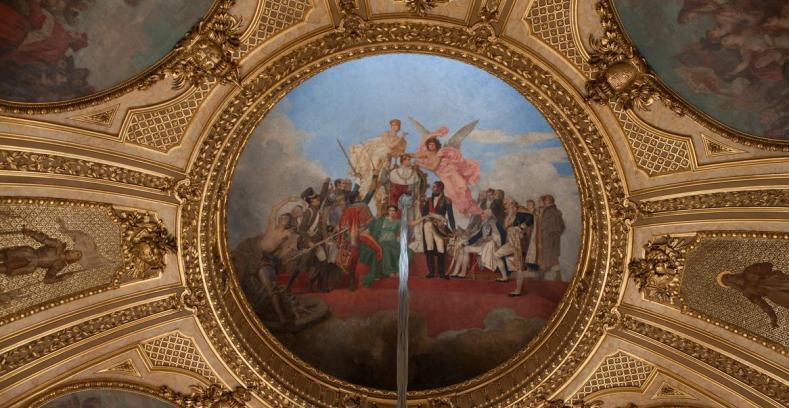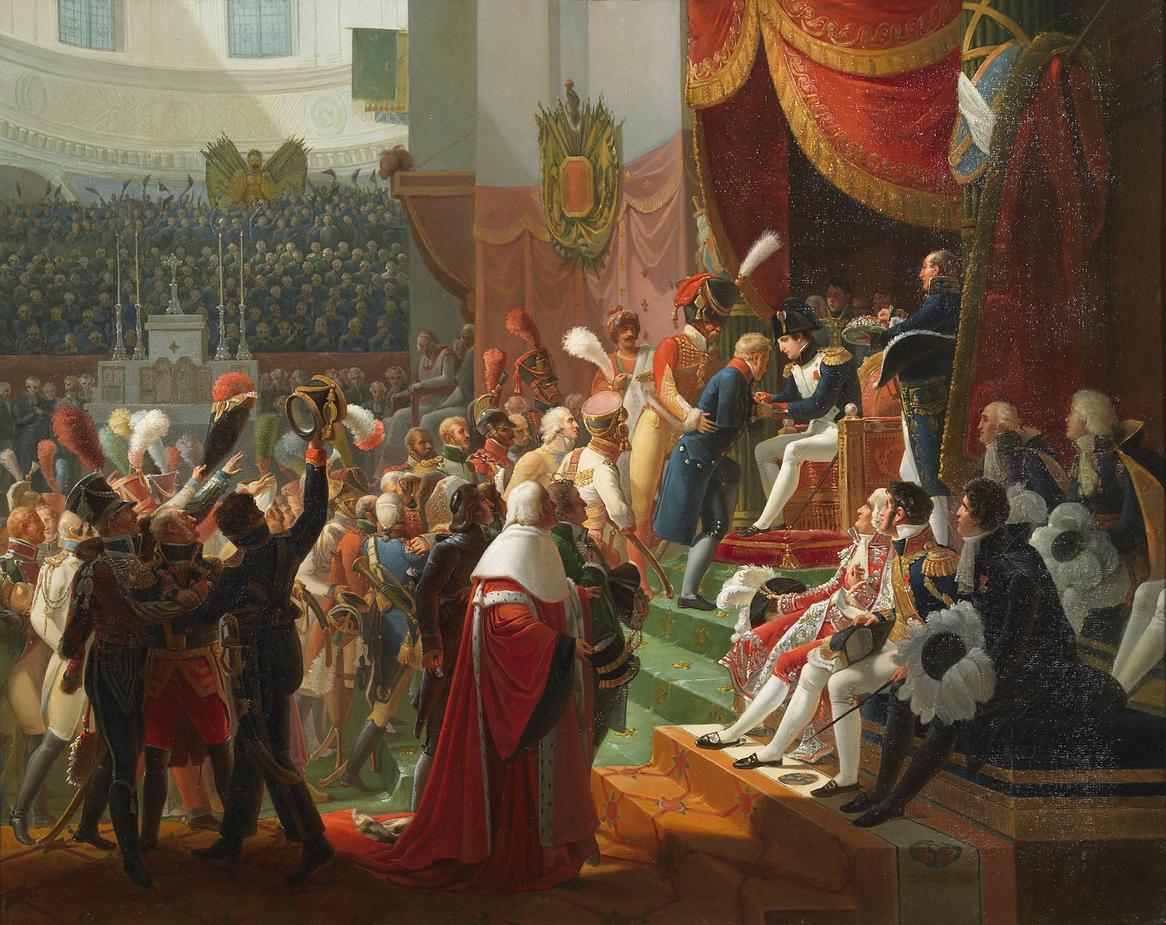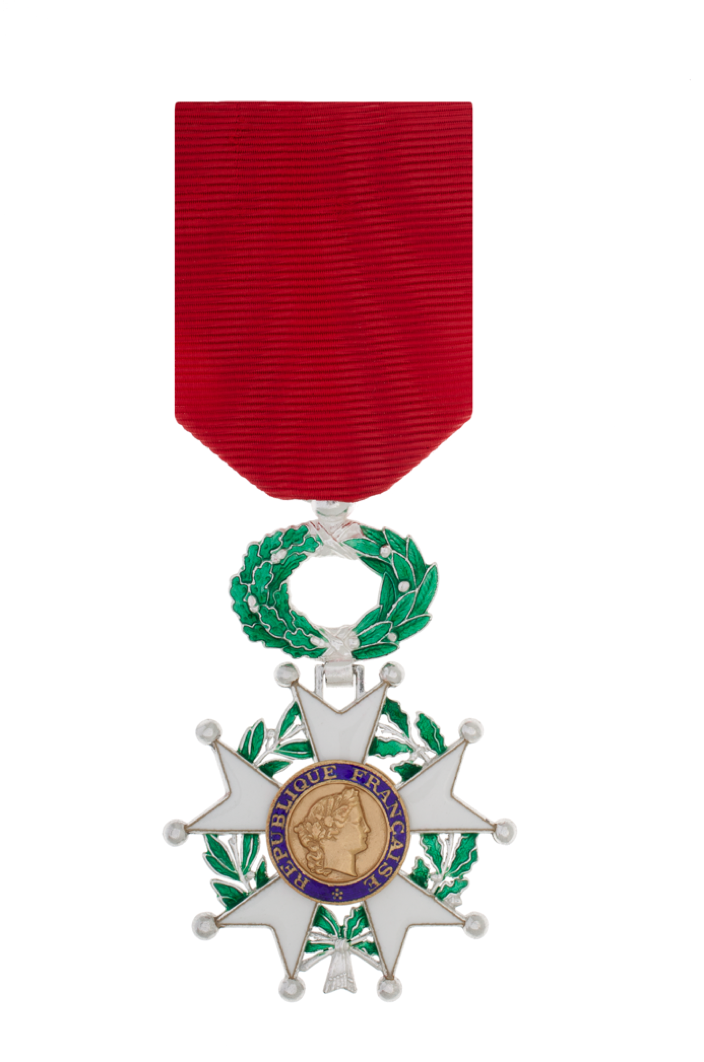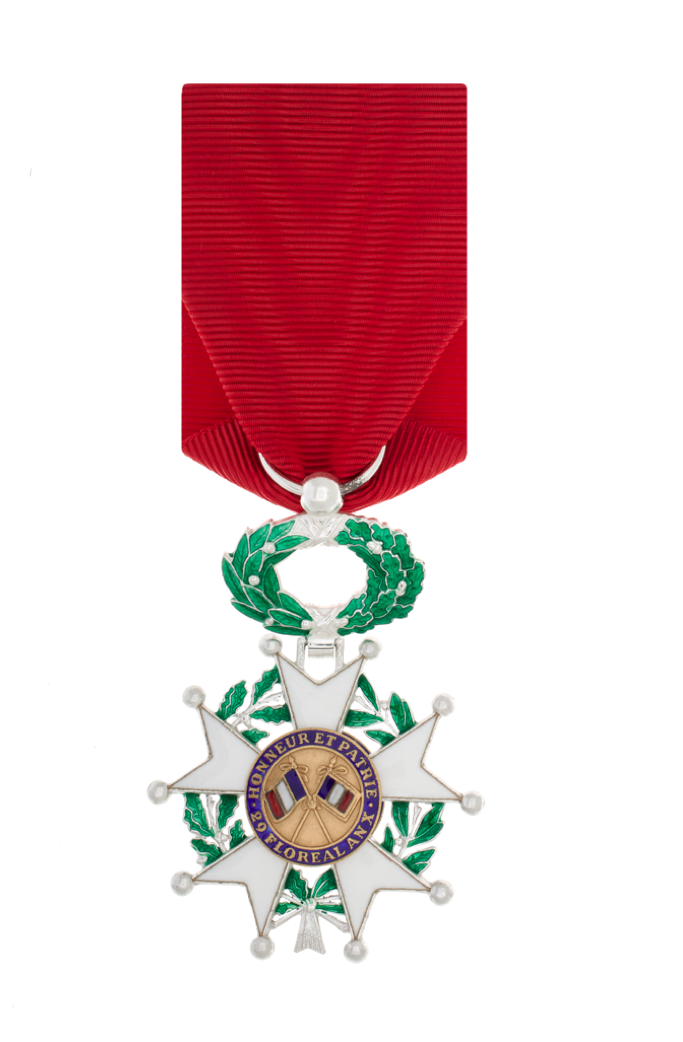
Founding principles and history
The Legion of Honor is the highest national decoration. For two centuries, it has been rewarding the outstanding merits of citizens and designating them as models of French civic service.
Founding principles
Its three founding principles are the hallmark of the vitality of the Legion of Honor:
1. Rewarding individual merit
The Order of the Legion of Honor rewards people who have carried out actions of great value, forged by their own merits. This principle is a strong symbol of the spirit arising from the French Revolution, and it replaces birthrights by the recognition of personal merit. The Order of the Legion of Honor thus creates a vast community of men and women treated on the same equal footing, excluding any social or professional consideration.
2. Universal recognition
In the democratic melting pot of the French republic, the Legion of Honor reflects the kaleidoscope of merits of French society in all its various forms. Whether of course in the military, whether in sports or industry, whether a Nobel Prize winner or a singer or a volunteer, every citizen who has demonstrated eminent merits may be awarded the Legion of Honor, regardless of the domain of expression of the merit.
This principle of equality is sometimes the cause of some misunderstanding on the part of the public. Yet it is what constitutes the greatness of the Order. It revolutionized the official decoration systems of many other countries, which drew inspiration from the organizational model of the Legion of Honor, its award criteria, its philosophy and its insignia.
3. Contribution to the public good
Holders of the Legion of Honor work for the benefit of society and not in their own exclusive interest. In all their diverse activities, they contribute to the development, the renown and the defense of France.
History of the Legion of Honor
The Legion of Honor was founded on May 19, 1802, by First Consul Napoleon Bonaparte, in a hostile context. After lengthy discussions at the Council of State, it was adopted by 56 votes for and 38 against by the Tribunat, and 166 votes for and 110 against by the Corps législatif (legislative body).
The new institution was part of the extensive program to reorganize the State, along with the Civil Code, the Conseil d’Etat (Council of State), the Court of Auditors, the prefects and the grandes écoles (specialized national elite schools).
Napoleon Bonaparte was aware of the need to restore a comprehensive system of rewards, inspired by ancient honorific orders swept away by the Revolution, but respectful of equality among citizens.
Napoleon Bonaparte pursued three visionary objectives:
- Reconciling the French, exhausted by a decade of political instability and military conflicts
- Reuniting them around a common ideal: individual honor and national honor
- Uniting the courage of military personnel with the talents of civilians, as the strong symbol of a powerful and unified State.
What the creation of the Legion of Honor heralded was important: no privileges, no exemptions, no remuneration, but the recognition only of individual merit, acquired and not transmitted.

As of the first inductions, Napoleon decorated both "his soldiers and his savants," in his own words. Empire Marshals (Berthier, Soult, Ney, Murat, Lannes, etc.) and the veterans of revolutionary campaigns were decorated alongside civilian figures: senior civil servants, judges (Brillat-Savarin), doctors (Corvisart), industrialists (Oberkampf, Delessert), scientists (Cuvier, Monge, Montgolfier), as well as artists (David, Gros, Gérard, Houdon), architects (Fontaine and Peyre), musicians and writers.
Until the Second Empire, military personnel accounted for about 75% of members, even though the Order gradually opened up to other domains such as, under the July Monarchy, crafts, small-scale industry and neighborhood trade.
Under Napoleon III, the Legion of Honor reflected French society even more faithfully, and all activities in the country were now represented, following in particular the rapid growth of industry and the development of charity work.
At the turn of the twentieth century, there were just under 45,000 French members of the Legion of Honor. Everything changed with World War I. By the countless sacrifices and acts of courage that it generated, the 1914-1918 war compelled a change in the award criteria of the Legion of Honor and an increase in membership.
This increase in numbers was further heightened by every new conflict: World War II, Indochina war and Algerian war. By 1962, the Order had 320,000 members.
It was to stop this inflation, which undermined the prestige of the Legion of Honor, that General de Gaulle undertook a major reform of the system of national decorations in 1962. For the Legion of Honor, he enacted a code, the synthesis of previous legislation, and set a maximum number of living members (125,000).
The Legion of Honor has continued to adapt to the evolution of society. In 2007 several measures were taken: application of strict gender parity in civilian recipients, creation of a class for volunteers in non-profit organizations, and the launching of the citizens’ initiative procedure, which allows private individuals to propose a deserving fellow citizen for admission into the Order.
In 2017, the national Orders reform reaffirms the principles of universal recognition and individual merit of the Legion of Honor and leads to a reduction of people awarded.
Insignia


The insignia of the Legion of Honor is a five-armed Maltese asterisk, topped by an oak and laurel wreath.
The central disc, enameled white, is surrounded by oak and laurel branches. On the obverse is depicted the effigy of the Republic (head of Marianne) with the epigraph "République française” (French Republic). On the reverse, there are two tricolor flags and the inscription of the Order’s motto, "Honneur et Patrie" (Honor and Fatherland), and the date of its creation, "29 Floreal Year X" (19 May 1802).